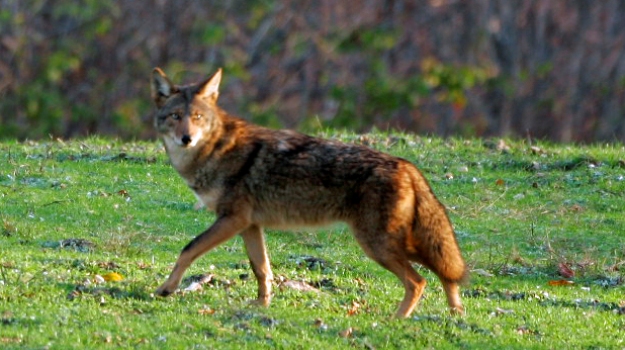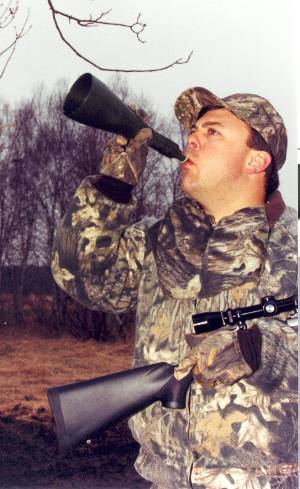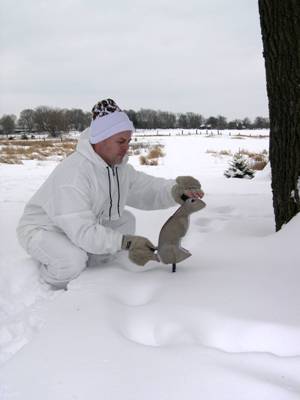Capitalize on Coyotes
By Austin Delano

Coyote hunting has its share of controversy. Some view these animals as furry and cuddly, while many see them as snarling, vicious carnivores. A number of influences have caused coyote densities to change significantly over the years. While numbers have been impacted, some of the old hunting methods used by the early settlers are still the best tactics.
The simple fact that humans have encroached on their turf has had a huge impact on predator densities. The way it was explained to me was before humans entered the picture an area would have 1 wolf, 2 coyotes, 4 fox and on down the chain. Obviously, these numbers are fictitious, but the larger predators kept the others in check and on down the line.
In my view, one of the major problems that we have had in the past thirty years is the anti-hunting/trapping public. Although they are the minority, they are very vocal. Through the 1980s and 90s their push to ban trapping caused fur prices to plummet. Back in the early 80s when I ran my trap-line I could get $120 to $160 for a prime “Christmas fox.” Fur costs have rebounded some in recent years, but they’re still a fraction of what they were thirty years ago. My suggestions to hunters and trappers are to be more vocal than the opposition and use your vote!
How you “feel” about predators is more than likely influenced by “where you come from.” If predators affect your livelihood or local economy like they may for ranchers, farmers, outfitter’s or a person trying to manage a property for other game animals (the predators’ prey), then you probably have a very negative view of them. If humans are “butting heads” with a predator species, guess who wins? Most folks in larger cities are neutral to the topic, but you do have a small amount of people who are totally against predator hunting, or any hunting for that matter. With people being more educated on the subject these days you find that most people realize that there can be, and should be, a balance - and that hunting and trapping are about the only logical, economical way to help control populations.
 Coyotes make up a high percentage of the predator hunting opportunities throughout the country. They can be found in all states (except Hawaii), Canada and Mexico. Clever and very adaptable, they can live almost anywhere including farmlands, forests and urban areas. Adult males have large territories that typically range from 15-25 square miles; adult females typically occupy areas of 6 to 10 square miles. The availability of food affects the territory size.
Coyotes make up a high percentage of the predator hunting opportunities throughout the country. They can be found in all states (except Hawaii), Canada and Mexico. Clever and very adaptable, they can live almost anywhere including farmlands, forests and urban areas. Adult males have large territories that typically range from 15-25 square miles; adult females typically occupy areas of 6 to 10 square miles. The availability of food affects the territory size.
Tracking, stalking slow, sitting over a carcass/bait or drives may all produce at certain times, but calling is by far the most popular method of hunting coyotes. Either with an electronic caller, a blown into call or by mouth, howling or imitating an animal in distress is a proven method no matter where you reside. They have uncanny eyesight, hearing and smell so certain steps must be taken if you wish to get close.
To begin, you first must find a spot where there are predators. Food is the biggest factor here. Look for areas that hold a lot of mice, pheasants, rabbits or other smaller animals that make easy prey. I find that calling gets better when there’s a blanket of snow covering the ground which makes their meals harder to come by or when cold temperatures mean they must take in more energy to stay warm. A hungry coyote is easier to call than one with a full gut.
Some like to try and locate a coyote with the use of a “howler.” This call will imitate their barks and shrill howls. Ideally, you want a response. Then, judging by the distance you either move closer or set up. Let me caution you, coyotes are very curious animals and they can cover a lot of ground fast. More times than I care to admit I’ve received a response to a howl and tried to move closer but end up being busted as the coyote runs into me.
Concerning calling, I could try to explain sounds to you all day and unless you could actually hear them it probably wouldn’t do much good. Rent a CD or DVD and experiment on your own. When imitating an anguished animal (usually a rabbit in distress), I like to start off soft incase there's something close. Call for a couple minutes and wait for several more. Build the intensity and volume with each series. If nothing shows up within twenty to thirty minutes it's time to change spots.
Their sense of smell is phenomenal. For all predators I suggest a strict regime of scent elimination - I use the Scent Killer system. Similar to the way you would prepare for a whitetail hunt; showering in Scent Killer Soap, treating your boots and clothes with Scent Killer Spray and paying attention to any foreign odor is of the utmost importance. If they circle downwind and smell you the gig is up. The use of some coyote urine placed out crosswind from your position can aid as a confidence booster.
 A coyote’s eyesight is exceptional, especially for picking up movement, so I suggest camouflage from head to toe. Match your camo to your background. Mossy Oak’s patterns replicate a number of settings, from a snow covered landscape to mature timber.
A coyote’s eyesight is exceptional, especially for picking up movement, so I suggest camouflage from head to toe. Match your camo to your background. Mossy Oak’s patterns replicate a number of settings, from a snow covered landscape to mature timber.
Decoys can also help. It gives them something to hone in on so it takes the attention off of you. Some will use animal pelts or mounted rabbits, or there are decoys specifically made for predator hunting. I have had luck with both commercial decoys and with my own homemade inventions. Movement is a big key. I used to tie fishing line to a rabbit pelt. It worked great; however, it was a pain having to deal with tangled fishing line when changing spots. A chicken feather tied to a string and then the string taped to your decoy will add plenty of motion with the slightest breeze.
Calibers and guns are much a matter of opinion. You’ll want something fast, flat shooting and that will knock them down to stay. I like a .223 or 22-250 but there are many acceptable calibers that will work. Accuracy is more important than the caliber.
With the recent cold temperatures throughout the country it makes for the absolute perfect conditions to hunt predators. It’s fun, exciting, good exercise and gives you a reason to get outdoors after all the other hunting seasons have closed.




























